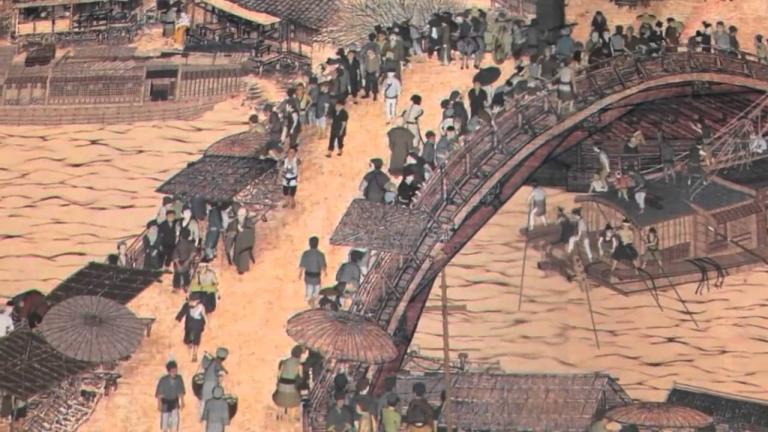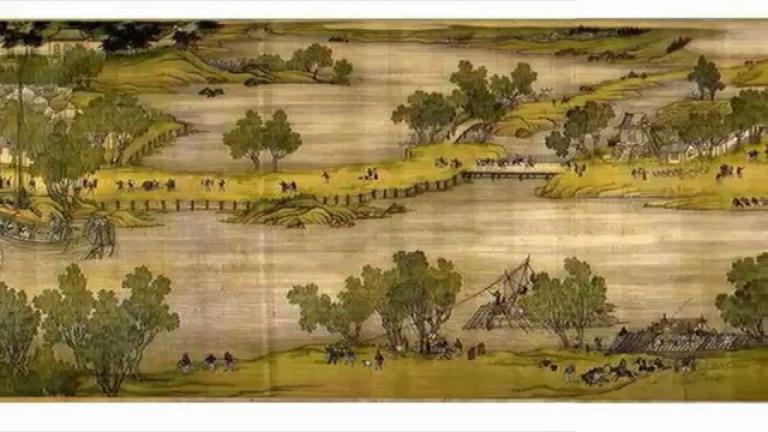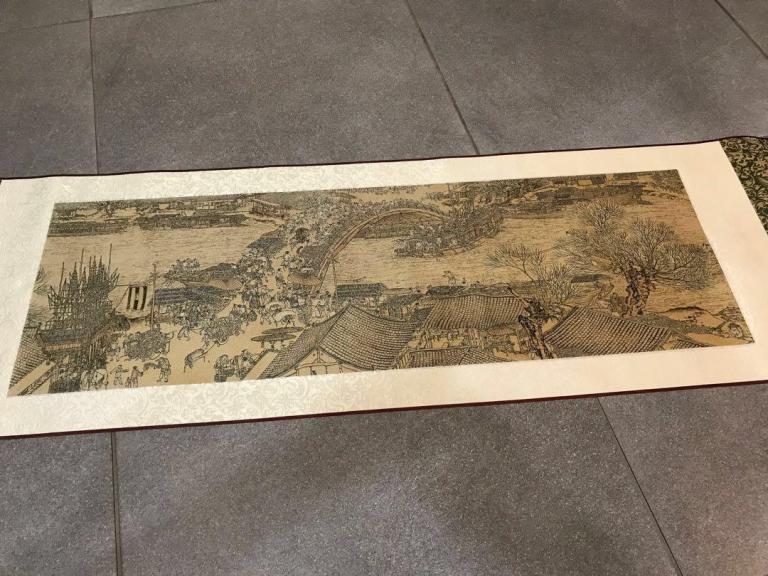A Horizontal scroll of the scenery along the bianhe river
4 min readA Riverside scene at Qingming Festival is a horizontal scroll more than five meters long. When it is unrolled from right to left, it is like opening a sluice gate to the river of history, with the prosperous scenery of Bianliang, the capital of the Northern Song Dynasty, unveiling itself before the viewer The painting depicts the hustle and bustle along the banks of the Bianhe river during the Qingming Festival. By this season, the snow and ice have gone, and the cold of early spring has bidden farewell, and people are welcoming the most important festival of spring the Qingming(Pure and Brightness) Festival, one of the 24 solar terms and a day for remembrance. On this day, people make offerings to their ancestors, a custom still observed to this day Qingming Festival is also a day to celebrate the arrival of spring, when the lovely warm sun and the gentle breezes turn the grass intoxicatingly green.

The painting startsfrom the right with a depiction of spring in the outskirts of the city of Bianliang brooks gurgling in the wilderness, with cottages tucked away among trees and roads crisscrossing into the far distance. old trees greet the breeze their branches and twigs already tinged with light green. In the distance are boundless be speaking, or shouting in surprise, while others appear astounded in fright Underneath, a big boat is trying to pass under the bridge, its bow lower than its stern. On the bow stands a man, frantically waving his arms, his mouth wide open as if giving orders: someone is trying to correct the direction of the boat by propping his pole against the base of the bridge; some boatmen are trying hard to work on the oars, while others standing on the awning quickly bring down the sail. the boat is going forward, leaving whirls in its wake.

At that critical moment as the boat has yet to pass, people on and under the bridge are all intensely absorbed in this singular event, with the rapid, whirling currents adding further tension to the scene of onlookers and boatmen The third section of the painting features street scenes. The Bianhe river makes a bend here and flows toward the east. along the banks a wide road leads to the high city gate, at the foot of which people are either resting, talking or simply looking around. Camels are passing the city gate, with only their heads seen outof the gate -all presenting a busy road scene. Past the city gate is Bianliang,a city of crisscrossing streets with shops teahouses, taverns, go clubs. martia arts arenas, temples, and everything imaginable, lining both sides of the streets There is heavy traffic on the streets: carts coming and going: some people in twos or threes, either walking in a hurry or stopping for a look of whatever interests them; others in groups talking in high spirits, or looking around enjoying the street scene Shop owners are hospitably soliciting customers. Suddenly, a cart drawn by four mules is seen rushing along, adding a sense of surprise to the leisurely scene Here, vendors. yamen runners, scholars, monks, old men, and young children, all look vivid and lifelike, and all wear different facial expressions.
The three sections of this scroll painting depict different scenes of the countryside, the river, and then the urban area, each focusing on one scene: sweeping willows in the first, the rainbow bridge in the second and the city gate for the third. By centering on a major scene, the picture looks quite orderly, although many miscellaneous details have been included. The atmosphere conveyed by each of the three sections is different. The first presents a carefree atmosphere of calm and detachment; the second tension and stimulation as enhanced by the whirling water; and the third, boundlessness and richness conveyed through trivialities and details.
The three-Section tableau of the painting is presented in a rhythmic yet contrastive way. The remoteness in the beginning poses a sharp contrast to thetension at the rainbow bridge and the lively street scenes. In the arrangement of the scenery. there are high and low points. After a slow beginning in the first section, the picture proceeds to its climatic scene at the rainbow bridge, and after portraying the street scenes inside and outside the city gate in the third section, the street scenes suddenly stop. The effect of lasting appeal that Chinese fine arts emphasizes is well embodied and realized in this painting.









